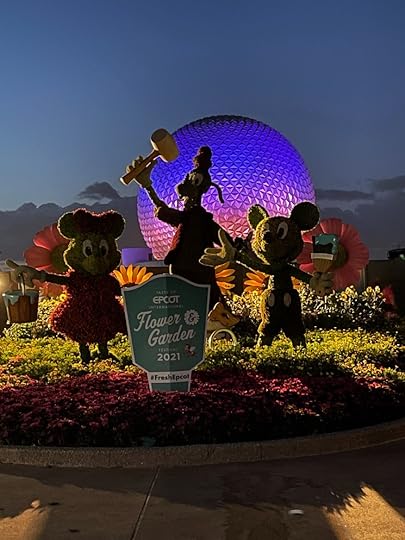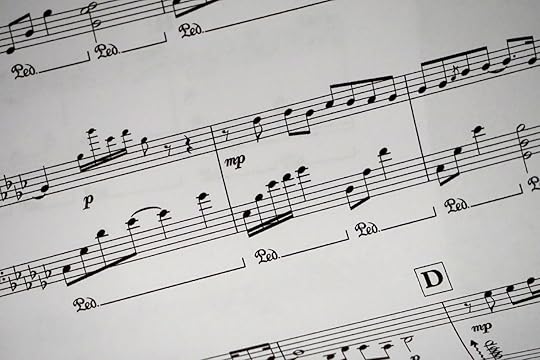Jaye Viner's Blog - Posts Tagged "music"
Beyond Words: Music that Gives All the Feels

An excerpt from my June newsletter, which has reflections, links, and exercises to explore its emotional impact on our lives. Subscribe at my website https://www.jayeviner.com
Last week I went to Disneyworld by myself for fun. It was a strange, extremely impulsive and extravagant decision. I made it with two days notice, not stopping to doubt, not even asking myself why, now that it was finally safe to travel, was this the place I wanted to go?
Something I didn’t really understand until I was on my flight home already regretting I hadn’t found a way to make the trip longer. I didn’t want to go home. I didn’t miss home. I hadn’t worn myself out as I expected. From this experience I learned two things that I am now using to try and understand what exactly made Disney so compelling.
The first is that I LOVE constructed realities. The artifice of themed restaurants, the rides that make movie worlds into a larger experience. The very idea that I climb on a boat and ride around in a circle in the dark watching animatronics float by for a movie I’ve never seen, is deeply satisfying.
The second thing (which perhaps I should’ve mentioned first) is the music. For me, music makes the lie of a constructed world feel real. I have been to Paris. Seeing little Paris at Epcot center is not impressive. But sitting in a fake Parisian theatre, singing along to Beauty and the Beast with a bunch of strangers in the dark, had me in tears. (I don’t even like Beauty and the Beast.)
Even as I’m crying, I feel a little cheated. Because feminist me is like, B&B is really terrible. And the anti-capitalist in me is like, Disney is responsible for lots of destruction for independent storytelling and rights abuses for authors. But I’m still crying. And I want to cry. I am sitting in that theater without any people within six feet and I realize I came to Disney specifically to be alone and to cry. To feel whatever I want and not have to explain it. I want to be part of this world no matter how problematic because it is not the world I’ve been living in for the past fifteen months full of death, and stupid people, and uncertainty.
Doubters could argue, Disney music works this way on me because I’m a child of a certain generation. Fair. But people also hardwired to embed emotion from music. I am particularly interested in the perfectly timed music cue adding another dimension to a moment whether it is my lived life or a film. We embed emotion when we tie songs or listening experiences to our personal lives at key moments.
But when we want to experience something bigger, to feel bigger, to be away from our responsibilities and doubts and fears, the only place to really experience that is through movies. And if movies aren’t making magic for you, as they continually fail me, I guess you go to a theme park. And you ignore the screaming children, and the heat, and the 6 dollar waters. In this constructed landscape you go somewhere else that isn’t a real place, it’s a feeling. Probably, its a feeling that doesn’t even have a name. And you look for moments that provide the perfect cue for you to make magic within yourself.
What to Listen for in Film Music

The biggest difference between a symphony and a film score is that the symphony was created to stand on its own, to be the focal point of our attention. In comparison, a film score is meant to blend into the background of our attention adding to the emotional experience of the film without distracting from the story.
But film scores are unique an stimulating works of art that can be appreciated both as part of a film and on their own as a listening experience. Here are some ways you can deepen your appreciation and notice of film scores on the screen.
Music in movies is most often scored through entrance cues tied to particular things going on in scene. These cues can act the same way chapters used to work on DVDs dividing the film into its central beats. Most traditional three act films especially in the 90s can be read in this way.
Notice the music at the beginning of the film. How does it change to signal the significance of the inciting action? When is the next time the music’s character changes in a significant way? What does its timbre signal about the story on the screen?
Another way to notice music in film is through themes. In his book, Music and Mythmaking, Timothy E. Scheure dissects the early history of film themes as ways to short hand information to the audience about heroes, villains and damsels in distress. These themes can also be called leitmotifs. This is a technique where significant people, ideas, or objects, are assigned a particular arrangement of notes. Wagnerian operas first made this technique famous and it carried through to films as soon as they began to be scored. Howard Shore’s Lord of the Rings score makes excellent use of leitmotifs and if you watch the trilogy with attention to these themes, you will learn new things about the subtexts of the scenes that is not otherwise visible.
The last way to notice music in film is the contrast between diegetic (music heard by the characters) and non-diegetic music (music heard only by the audience.)
In Giuseppe Tornatore’s 1998 film, The Legend of 1900, the interplay between diegetic and non diegetic plays an important role in the texture and story of the film helping build the sense of the story as a fable that is both true and perhaps not so true.
When you notice music in a film does it exist for the characters or just the audience? How does it change in different roles?
Published on July 20, 2021 07:23
•
Tags:
film, lord-of-the-rings, music



